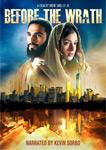The Role of Artificial Intelligence in Optimizing PCB Layout and Routing
 By
By
In the intricate world of PCB design, the
delicate balance between precision and efficiency can often be a challenging
feat to achieve manually. However, imagine a realm where artificial
intelligence seamlessly navigates the complexities of layout and routing,
optimizing processes at a pace that surpasses human capabilities. The integration of AI in PCB design holds
the key to unlocking a realm of possibilities that could redefine the very
essence of circuit board creation. The question arises: How can AI
revolutionize the traditional methods and propel PCB design into a new era of
innovation and efficiency? With the advent of advanced AI algorithms, companies
like OurPCB
are at the forefront of this transformative journey, offering solutions that
streamline design workflows and enhance productivity. ●
AI algorithms enhance PCB layout
efficiency and accuracy. ●
Automation optimizes signal trace
paths for reliability. ●
Advanced algorithms predict and
prevent signal integrity issues. ●
AI revolutionizes design by
learning and improving iteratively. How can artificial intelligence
streamline the PCB design process to enhance efficiency? Design automation plays a pivotal role in
boosting productivity enhancement within PCB layout processes. By harnessing AI
algorithms, design automation tools can rapidly analyze complex design
requirements, identify optimal component placements, and generate efficient
routing solutions. These tools leverage machine learning to iteratively improve
their performance based on historical design data, enabling them to make
intelligent decisions that align with specific project objectives. The integration of design automation in
PCB layout significantly reduces manual intervention, allowing designers to
focus on higher-level tasks that require human expertise. AI-powered tools can
swiftly adapt to design changes, ensuring rapid iterations and quick resolution
of design challenges. Moreover, by automating routine tasks such as component
placement and signal routing, designers can allocate more time to critical
design aspects, leading to enhanced overall productivity. Automating routing optimization in PCB
layout involves employing AI algorithms to efficiently determine the most
effective paths for signal traces. By utilizing automated solutions, these
algorithms can analyze various factors such as signal integrity, length
matching, and minimizing interference to optimize the routing process. Routing
algorithms play a crucial role in this automation by evaluating different
routing options and selecting the most suitable paths based on predefined
design rules and constraints. Automated solutions streamline the
routing optimization process by quickly exploring numerous routing
possibilities and identifying the optimal configurations. These algorithms
consider critical parameters like signal propagation delay and minimizing crosstalk,
ensuring the overall performance and reliability of the PCB design. By
leveraging routing algorithms, designers can achieve enhanced signal quality
and reduced electromagnetic interference, leading to a more robust and
efficient PCB layout. To enhance the efficiency of PCB layout
and routing, advanced algorithms play a vital role in optimizing signal trace
paths and ensuring optimal performance. When leveraging advanced algorithms in
PCB design, consider the following: Implementing efficient processes is
crucial for streamlining PCB layout tasks and optimizing design workflows. By
utilizing artificial intelligence (AI) tools, you can significantly enhance the
accuracy of your designs while reducing errors in the layout process. AI
algorithms can analyze vast amounts of data to identify potential issues,
suggest optimal component placement, and ensure signal integrity. These tools
can also help in automating routine tasks, such as routing traces and managing
design constraints, saving you valuable time and effort. AI-powered layout processes enable you to
achieve higher design quality by detecting potential design rule violations
early in the process. By automatically adjusting component placements and
routing paths, AI can help prevent signal interference and ensure efficient
thermal management. Moreover, AI algorithms can learn from past design
iterations, continuously improving their performance and adaptability to
specific project requirements. Revolutionizing the PCB design landscape
involves harnessing the power of artificial intelligence to enhance efficiency
and accuracy in layout and routing processes. AI-driven innovation is paving
the way for a profound design transformation in the following ways: When tackling complex design constraints
and requirements in PCB layout and routing optimization, artificial
intelligence utilizes machine learning and design automation. It efficiently
navigates intricate parameters to enhance overall performance and efficiency. AI, through machine learning and
predictive modeling, can analyze PCB designs for potential signal integrity
issues. It offers proactive design validation, identifying and preventing
signal integrity problems before production. Utilizing advanced algorithms, AI
optimizes PCB layouts effectively. To implement AI algorithms for optimizing
PCB layouts, a moderate level of expertise is needed. Understanding
optimization algorithms, design constraints, and AI implementation basics are
crucial. With proper training, you can effectively utilize AI for layout
optimization. AI's adaptive algorithms analyze and
learn from your design preferences, adjusting to your unique style. By
understanding your choices and patterns, AI optimizes PCB layouts to align with
your specific design methodologies, enhancing efficiency. When using AI in PCB design optimization,
you may face ethical implications related to data accuracy. Training
requirements and implementation challenges can also arise, impacting the
effectiveness of AI tools and the overall success of the design process.Key Takeaways:
Enhancing PCB Design Efficiency
Automating Routing Optimization
Leveraging Advanced Algorithms
Streamlining Layout Processes
Revolutionizing PCB Design Landscape
How Does Artificial Intelligence Handle Complex Design
Constraints and Requirements in PCB Layout and Routing Optimization?
Can AI Predict and Prevent Potential Signal Integrity Issues
in PCB Designs?
What Level of Expertise Is Required to Implement AI
Algorithms for Optimizing PCB Layouts?
How Does AI Adapt to Different Design Preferences and Styles
of PCB Designers?
What Are the Potential Challenges and Limitations of Using
Artificial Intelligence in PCB Design Optimization?




